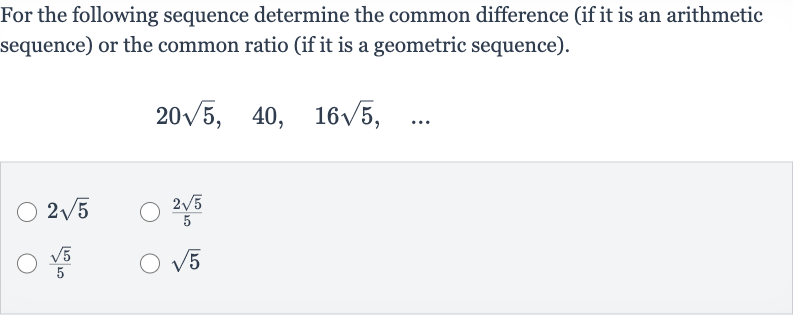Full solution
Q. For the following sequence determine the common difference (if it is an arithmetic sequence) or the common ratio (if it is a geometric sequence).
- Identify Sequence Type: First, let's identify if the sequence is arithmetic or geometric by examining the relationship between consecutive terms.
- Calculate First Term Difference: To determine if it's an arithmetic sequence, we subtract the second term from the first term:
- Calculate Second Term Difference: Now, let's calculate the difference using the value of which is approximately :This does not seem to be a consistent difference, but let's check the next pair of terms to be sure.
- Check Arithmetic Sequence: Subtract the third term from the second term:
- Check Geometric Sequence: Calculate the difference using the value of : The differences between terms are not consistent, so this is not an arithmetic sequence.
- Divide Second by First Term: Now let's check if it's a geometric sequence by dividing the second term by the first term:
- Calculate Ratio Simplification: Simplify the division:
- Divide Third by Second Term: Next, divide the third term by the second term to see if the ratio is consistent:
- Compare Ratios: Simplify the division:
- Determine Sequence Type: Now, let's compare the ratios: and To see if they are the same, we can multiply the second ratio by to rationalize the denominator:
- Determine Sequence Type: Now, let's compare the ratios: and To see if they are the same, we can multiply the second ratio by to rationalize the denominator:Since both ratios are equal to , we have determined that the sequence is a geometric sequence with a common ratio of .

